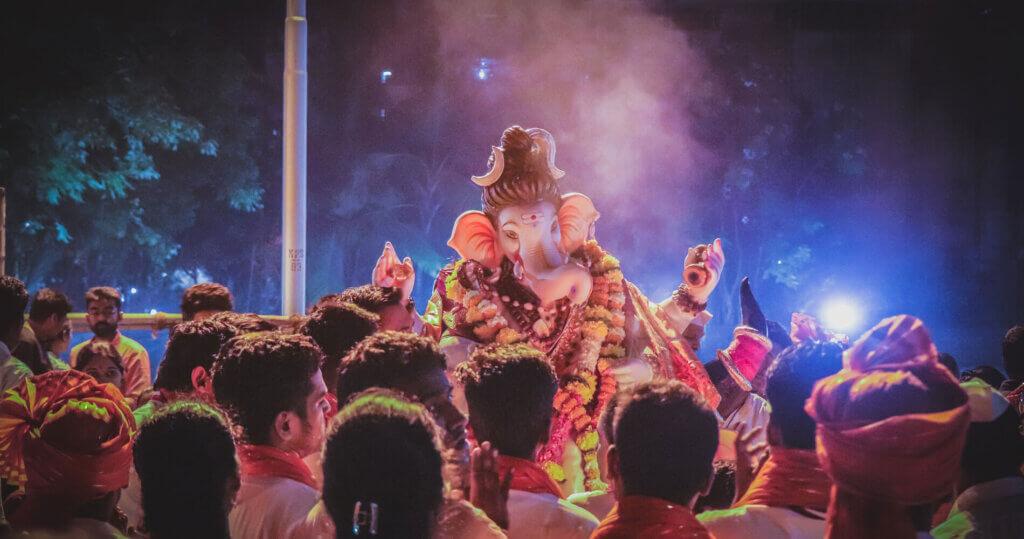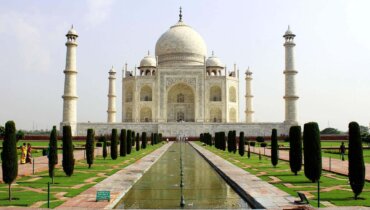
The Birth Story
Ganesha might be known now, but how did he come into being?
The story starts with the Goddess Paravi at the home she and her husband Lord Shiva share on Mt. Kailash. One day, she decides to take a bath while Shiva is away, so she tells Shiva’s bull Nandi to guard the door. When he comes home, Nandi lets him in against Paravi’s wishes.
Annoyed, she decides she needs someone loyal to her above anyone else. She takes some wood and the turmeric she was using to bathe with and makes a statue of a boy. She breathes life into this statue, names him Ganesha, and declares him her son.
The Elephant Head
But, wait! If Ganesha was a boy, why does he have an elephant’s head?
Well, yet again, Paravi wants to take a bath in peace. She sends Ganesha out to guard the door. When Shiva comes home, he finds a strange boy not letting him into his own house. Not realizing that it was his son, Shiva beheads him out of anger. Understandably, Paravi is devastated. She threatens to destroy Creation unless two conditions are met. The first is that Ganesha is revived, and the second is that he be worshipped before the gods.
Shiva agrees and sends men out to find a suitable head. Finally, a head is brought back, but it is that of an elephant. It was now or never, so Shiva placed it on Ganesha’s body and breathed life into him.
In the end, Shiva declares Ganesha his son. He gifts him the title of being the Leader of the Ganas (class of beings), or Ganapati.
The Ganesha Mumbai Connection
During the Maratha rule, Chhatrapati Shivaji named Ganesha a family god. He started a festival in Pune that celebrates Ganesh. This rapidly spread his popularity throughout Maharastra. Mumbaikers relish in the festivities since the culmination of immersing the idol in the sea is done in Mumbai. It is one of the biggest and grandest festivals in Maharastra every year.
Even outside of Maharastra, Ganesh holds a special place in many Indians’ hearts. In 1893, in the middle of the Indian revolution for independence against the British, they imposed a curfew on Indians so people could not go out and discuss the rebellion. Indians responded by using this festival as a ruse to share information about the revolution.
Fun Facts
Indonesian currency features Lord Ganesha because he is said to bring good fortune. This was introduced during a time when some Asian currencies were getting devalued.
The Ganesha festival, called Ganesh Chaturthi, is celebrated every year between August and September for ten days. In 2023 it will begin on September 19th.
The Lalbaugcha Raja idol in Mumbai often has visitors waiting in line for 10-15 hours. There are two lines, one to see from afar and one to touch the idol and ask for a blessing, but be prepared to wait a while in either line.
Besides Ganesh, he is known by over 100 names- 108 to be precise!
Many people believe that the spiritual meaning of having an elephant head and a human body is that we should live in harmony with the natural world.
Ganesha is considered the patron deity of scribes, poets, and authors.
Maybe you could use a little luck in your life right about now, or maybe you want to check out the hype around Ganesh Chaturthi. Our collection of Ganesh-inspired magnets, totes, and scarves awaits.




